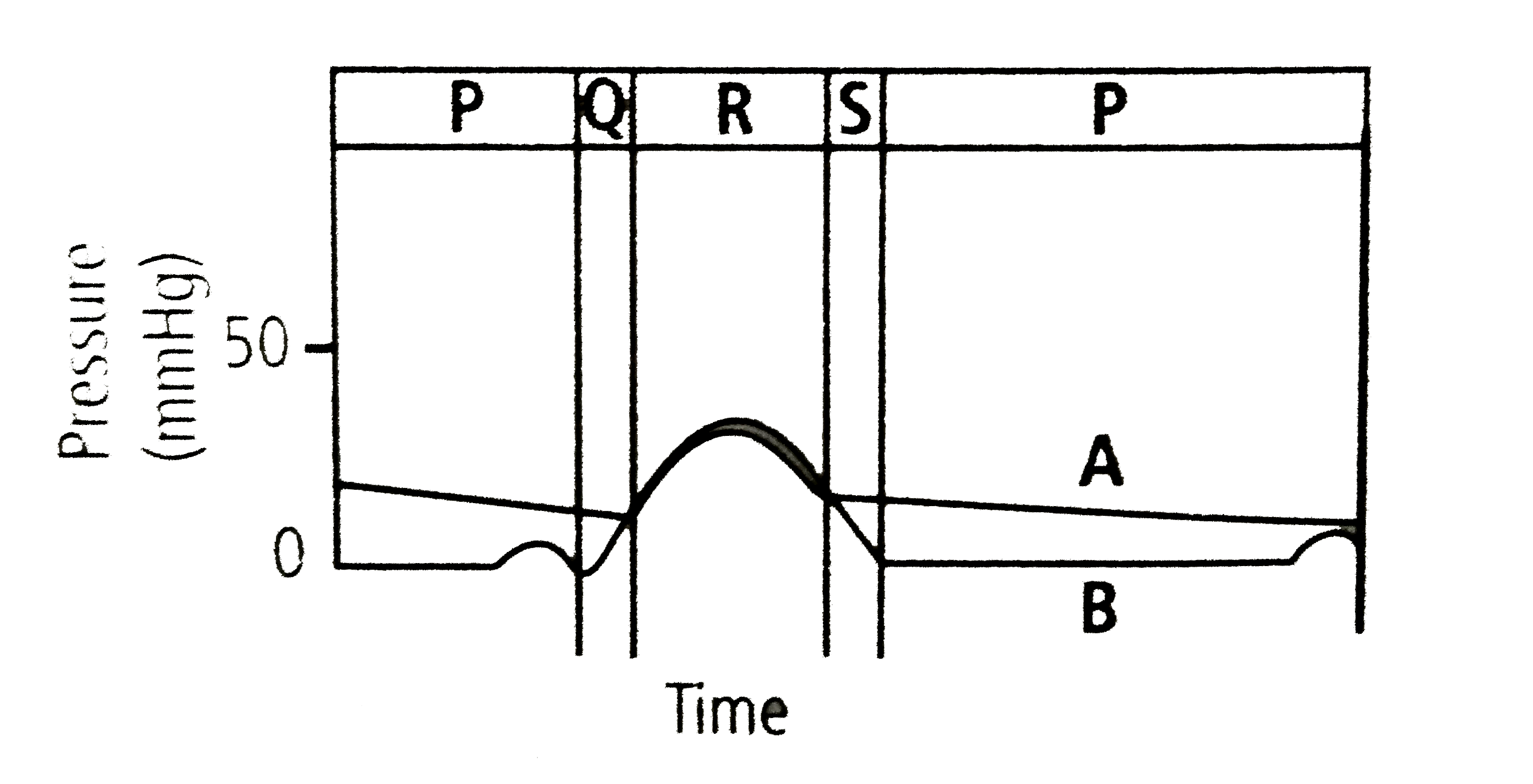During isovolumetric contraction of ventricles
Atrioventricular valves open
Pressure within ventricles decrease
Blood volume in ventricles remains constant
Semilunar valves remain open
Step-by-Step Solution:
1. Understanding Isovolumetric Contraction:
- Isovolumetric contraction is a phase in the cardiac cycle where the ventricles contract but there is no change in volume. This occurs because all the heart valves are closed during this phase.
2. Position of Atrioventricular Valves:
- During isovolumetric contraction, the atrioventricular (AV) valves (tricuspid and mitral valves) are closed. This prevents blood from flowing back into the atria from the ventricles.
3. Pressure Changes in the Ventricles:
- As the ventricles contract, the pressure inside them increases. This is essential for the next phase of the cardiac cycle, where blood will be ejected into the aorta and pulmonary artery.
4. Blood Volume in the Ventricles:
- The volume of blood in the ventricles remains constant during isovolumetric contraction. This is the defining characteristic of this phase, as the term "isovolumetric" indicates that the volume does not change.
5. Position of Semilunar Valves:
- The semilunar valves (aortic and pulmonary valves) are also closed during isovolumetric contraction. This prevents blood from leaving the ventricles until the pressure is sufficiently high to open these valves.
6. Conclusion:
- The correct observations during isovolumetric contraction are that the atrioventricular valves are closed, the pressure in the ventricles increases, the blood volume remains constant, and the semilunar valves are also closed.
Final Answer:
- During isovolumetric contraction of the ventricles, the blood volume in the ventricles remains constant, the atrioventricular valves are closed, the pressure in the ventricles increases, and the semilunar valves are also closed.
---
- Isovolumetric contraction is a phase in the cardiac cycle where the ventricles contract but there is no change in volume. This occurs because all the heart valves are closed during this phase.
- During isovolumetric contraction, the atrioventricular (AV) valves (tricuspid and mitral valves) are closed. This prevents blood from flowing back into the atria from the ventricles.
- As the ventricles contract, the pressure inside them increases. This is essential for the next phase of the cardiac cycle, where blood will be ejected into the aorta and pulmonary artery.
- The volume of blood in the ventricles remains constant during isovolumetric contraction. This is the defining characteristic of this phase, as the term "isovolumetric" indicates that the volume does not change.
- The semilunar valves (aortic and pulmonary valves) are also closed during isovolumetric contraction. This prevents blood from leaving the ventricles until the pressure is sufficiently high to open these valves.
- The correct observations during isovolumetric contraction are that the atrioventricular valves are closed, the pressure in the ventricles increases, the blood volume remains constant, and the semilunar valves are also closed.
- During isovolumetric contraction of the ventricles, the blood volume in the ventricles remains constant, the atrioventricular valves are closed, the pressure in the ventricles increases, and the semilunar valves are also closed.
Topper's Solved these Questions
Similar Questions
Refer to the given figure in which A refers to pulmonary artery pressure and B refers to right ventricular pressure. Identify P,Q,R and S in the figure and match with the list (i-iv) given below
(i) Isovolumetric ventricular contraction
(ii) Ventricular ejection
(iii) Isovolumetric ventricular relaxation
(iv) Ventricular filling

View SolutionDuring muscle contraction
View Solution
Knowledge Check
A : Isovolumetric systole of a normal cardiac cycle is responsible for the opening of semilunar valves causing the blood flow into aortic aorta and pulmonary aorta.
R : During isovolumetric systole, intraventricular pressure increases as semilunar and AV valves are closed and ventricles are contracting .AIf both Assertion & Reason are true and the reason is the correct explanation of the assertion, then mark (1).BIf both Assertion & Reason are true but the reason is not the correct explanation of the assertion, then mark (2).CIf Assertion is true statement but Reason is false, then mark (3).DIf both Assertion and Reason are false statements, then mark (4).During contraction of muscles :−
AActin Filament slide over actinBMyosin filament slide over actinCActin filament slide over myosinDMyosin filament slide over actinDuring contraction of muscles :−
AThin filaments slides over the thick filamentsBThick filament slides over the thin filamentsCBoth filaments slide over each other.DNo filament slides during contraction
